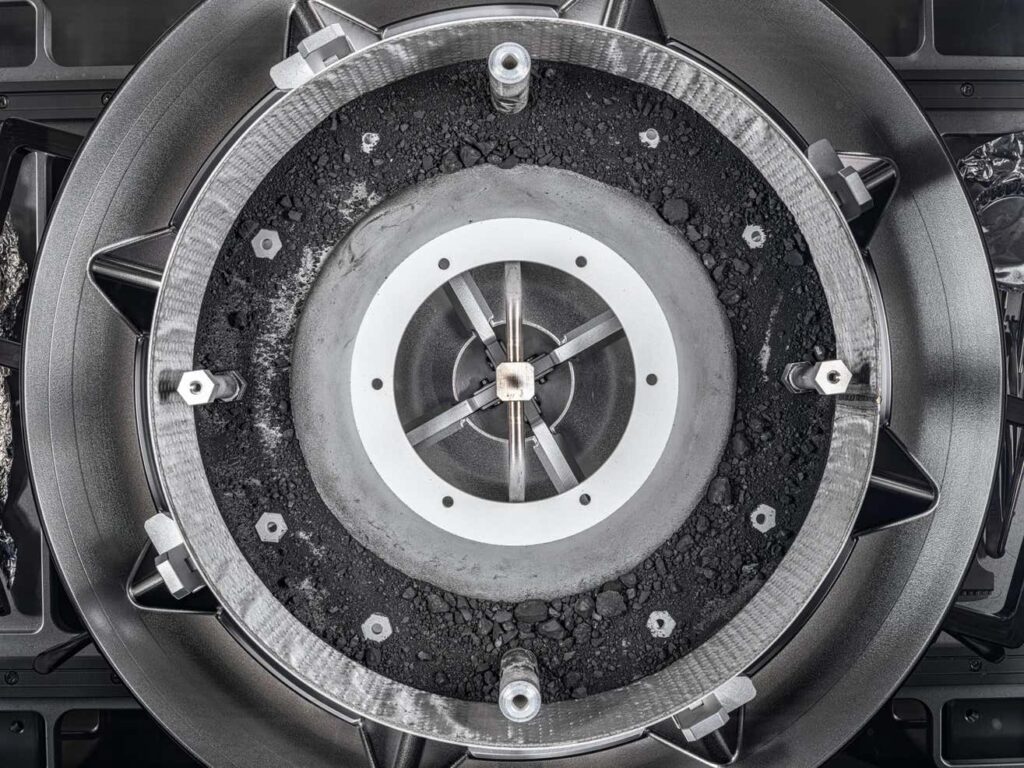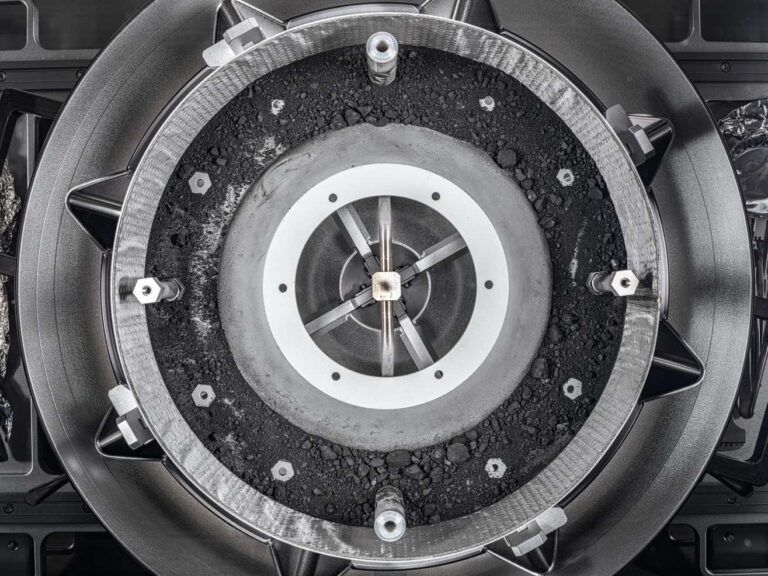NASA Unveils Astounding Asteroid Cache as Container is Cracked Open – A Jaw-Dropping Revelation!
The space agency has finally revealed a vast collection of ancient rocks and dust, after months of arduous efforts to reach the main portion of the OSIRIS-REx asteroid sample.
The contents of the aluminum canister, which holds fragments of an ancient space rock, have finally been revealed after it was opened. The NASA team successfully managed to open the TAGSAM head, which had been obstructed by two stubborn fasteners. This breakthrough allows scientists to access the majority of the asteroid Bennu sample, providing valuable insights into the origins of our solar system. The photograph below, taken by Erika Blumenfeld from the Advanced Imaging and Visualization of Astromaterials (AIVA) team and Joe Aebersold, the project lead, showcases the meticulous process of capturing high-resolution images using manual techniques and a semi-automated focus stacking procedure, as stated by NASA.

Before the majority of the asteroid sample can be extracted, there are a few remaining steps to be taken. The team responsible for curating the sample will now remove the circular metal collar and transfer the remaining sample from the TAGSAM head into smaller sample trays shaped like a pie wedge. These trays will be photographed before the sample is weighed, packaged, and stored at NASA’s Johnson Space Center in Houston, Texas.
The weight of the sample is still unknown, as it will determine the precise amount of asteroid material that the OSIRIS-REx spacecraft brought back to Earth. When the aluminum lid of the sample canister was initially removed, team members discovered black dust and debris on the avionics deck of the canister. They also used tweezers or a scoop to remove some of the material from inside the canister while holding down the mylar flap of the TAGSAM head. So far, the total weight of the sample collected is estimated to be 8.8 ounces (250 grams) of rock and dust. With the additional bonus sample alone, NASA has already exceeded its goal of bringing at least 2.12 ounces (60 grams) to Earth.
The OSIRIS-REx mission was launched in September 2016 and reached the asteroid Bennu in December 2018. In October 2020, the spacecraft successfully obtained pieces of a small, near-Earth asteroid and began its journey back to Earth in May 2021.
In September 2023, the spacecraft delivered the sample to the Utah desert. However, NASA faced challenges in opening a round sampler head located at the end of an articulated arm that was used to collect the sample. In November, the curation team started developing new tools that could fit inside the glovebox containing the canister, and they finally succeeded in overcoming the stubborn fasteners.
The composition of Bennu will be thoroughly examined by a team of 230 global scientists, who will analyze the returned pieces of the asteroid. NASA plans to retain a minimum of 70 percent of the sample at Johnson Space Center for future research that will take place in the coming decades, with the aim of utilizing advanced technology. Additionally, some fragments of the asteroid will be made accessible to the public for display at the Smithsonian Institution, Space Center Houston, and the University of Arizona.
Bennu, a small asteroid that frequently passes close to Earth every six years, is believed to have originated from a larger carbon-rich asteroid approximately 700 million to 2 billion years ago. Over time, it has gradually approached Earth. By examining fragments of the asteroid in a laboratory, scientists will gather valuable insights into the origins of our solar system.
NASA has stated that the final mass of the sample will be determined in the upcoming weeks. We eagerly anticipate discovering more about this continually fascinating asteroid sample.
Do not forget to share your opinion with us to provide you with the best posts !




0 Comments